Kurth Electronic KE401 IT Handleiding
Bekijk gratis de handleiding van Kurth Electronic KE401 IT (4 pagina’s), behorend tot de categorie Kabels voor pc's en randapparatuur. Deze gids werd als nuttig beoordeeld door 13 mensen en kreeg gemiddeld 4.3 sterren uit 7 reviews. Heb je een vraag over Kurth Electronic KE401 IT of wil je andere gebruikers van dit product iets vragen? Stel een vraag
Pagina 1/4

Probe 310/410 ( Berührungsloser Empfänger)
Die ist ein berührungslos arbeitender PROBE Prüflautsprecher, der die von EasyTest gesendeten Signale empfängt und hörbar macht. Die grüne Signalstärke - LED mit
Filterfunktion zeigt das präzise 1kHz Signal vom EasyTest an. Störende Signale, z.B. 50 Hz oder die Harmonischen davon werden ausgefiltert. Die Probe 410 verfügt
zusätzlich über eine rote LED, mit der eine ISDN UK0 Leitung gefunden werden kann. Damit kann einfach an z.B. Verteilern eine aktive ISDN UK0- Leitung detektiert werden.
Eine Taschenlampen - Funktion mit reinweißem Licht garantiert eine eindeutige Farberkennung der Adernkennzeichnungen in dunklen Verteilern. Die Prüfspitze der PROBE
besteht aus faserverstärktem, leitfähigem Kunststoff mit Bajonettverschluss zum einfachen Wechseln vor Ort ohne Öffnen des Gerätes . Am unteren Ende der PROBE
befindet sich eine Anschlußbuchse für einen optional erhältlichen Ohrhörer (Art.-Nr. 49600), mit dem Signale aus größeren Entfernungen (bis zu 150 cm) noch gut verfolgt
werden können. Die Probe wird durch Drücken der Tasten High oder Low eingeschaltet. Die Position High ist die empfindlichste Stufe zum Suchen schwacher Signale. In
Position Low wird z.B. das gefundene Adernpaar oder Kabel präzisiert.
EasyTest 300 - 720 ( Tonsender )
Spannungsfestigkeit bei versehentlichem Anschluss an Überspannung:
MODUS CONT (Widerstandsprüfung) 240 V AC - Alle Geräte
MODUS TONE (Suchton) 120V AC - KE3xx, KE4xx 500V AC - KE5xx, KE7xx
EasyTest wird durch die Taste ON/OFF ein- und ausgeschaltet.
Einschalten : Nach Drücken der Taste ON/OFF ist zur Einschaltbestätigung ein Ton hörbar (nur KE7xx ) und die ALT- und SOLID LEDs leuchten kurz auf. Für alle anderen
Versionen werden je nach Stellung des dreistufigen Schiebeschalters folgende LEDs als Einschalt - Information genutzt. Stellung:
TONE = ALT- LED blinkt
DATA = Data- LED leuchtet schwach grün
CONT = CONT- LED blinkt kurz
EasyTest schaltet nach 30 Minuten automatisch aus. Wenn es länger benötigt werden sollte, so wird, nachdem das Gerät eingeschaltet ist, die ON/OFF Taste innerhalb 1
Sekunde zweimal betätigt. Es ertönt wieder ein kurzer Bestätigungston, daß der Timeout - Override- Modus aktiviert wurde. Zusätzlich blinkt die SOLID- LED kurz. Wenn im
Tone Modus die Funktion SOLID gewählt ist, übernimmt diese Funktion die ALT- LED.
Ausschalten: Drücken der ON/OFF Taste länger als 1,5 Sekunden. Es ertönt der Abschaltton (nur KE7xx), die ALT- und SOLID LEDs leuchten kurz auf und das Gerät schaltet
aus.
Schnelle Anzeige von Leitungszustand bei analogen Telefonleitungen oder Prüfung von Spannungsquellen auf digitalen Leitungen, Linien von Alarmanlagen und
vielem mehr. Auf einen Blick erkennbar dargestellt wird der Zustand der analogen Telefon - Anschlußleitung nach Einschalten und dem Einstecken von EasyTest in die
Anschlußdose der Telefonleitung. Dies geschieht z. B. direkt mit dem RJ11 - Stecker (nicht KE5xx), mit dem als Option lieferbaren TAE - Adapter oder durch einfaches
Anklemmen an die Adern mit den Krokodilklemmen.
Freie Leitung – Speisespannung bis zu 70 Volt DC, LED leuchtet hell. Rot a/b - vertauscht, grün richtig gepolt, A-Ader oder minus auf roter Klemme. POL EasyTest zeigt
mit roter LED zusätzlich an ob die Spannung 90V an den Prüfleitungen übersteigt. Diese Information kann auch zur Identifikation der Spannung am ISDN U-Interface
benutzt werden. Ab 100 V wird zusätzlich beim KE7xx ein Alarmton zugeschaltet zur Warnung vor hoher Spannung auf der Linie.
Belegte Leitung – Speisespannung zwischen 10 und 20 Volt DC. LED leuchtet dunkel. Rot a/b vertauscht, grün richtig gepolt. Sinnvoll z.B. an einem Verteiler um zu POL
prüfen, ob die Leitung belegt ist oder nicht. Rufwechselspannung wird durch zusätzlich aufleuchtende rote oder grüne POL - LED angezeigt. Bei reiner Wechselspannung
leuchtet die POL - LED orange. Grundsätzlich kann mit EasyTest jede Art von Spannungsquelle auf Polarität, Art der Spannung und deren ungefähre Höhe geprüft werden.
1. Modus TONE - Suchton
Nach dem Einschalten im Modus TONE startet Easytest mit der ALTernierenden Konsequenz . EasyTest verfügt über vier Suchfrequenzen. Die Auswahl ist denkbar einfach.
Durch kurzes Drücken (<2 sec) der Taste SOLID wird eine Suchfrequenz mit exakt 1 kHz gesendet. Wird die Taste länger als 2 sec gedrückt so wird eine Suchfrequenz von 2,9
kHz erzeugt.
Durch Drücken der Taste ALT (<2 sec) werden die Frequenzen 880 Hz/1 kHz abwechselnd gesendet. Durch Drücken länger als 2 sec. wird auf die Frequenzkombination 1,9
kHz/2,6 kHz umgeschaltet. Die hohen Suchfrequenzen haben zwei Vorteile: Erstens ist das menschliche Ohr im Bereich 2600 Hz mit am empfindlichsten, zweitens sind diese
beiden Frequenzen außerhalb der Signalisierungsfrequenzen von Telefonsystemen. Die LEDs rechts von den Tasten zeigen an welcher Suchton aktiviert ist. Dies ist auch aus
der Entfernung erkennbar. Das Suchsignal kann ohne zu stören auf aktive (Spannungsführende) Telekommunikations- und Datenleitungen eingespeist werden. KE4xx und
KE7xx sind für Datensignale hochohmig, deshalb ist es möglich, auf aktive Telefonleitungen mit und ISDN- ADSL Systemen Suchsignale ohne Datenstörungen zu senden.
KE4xx reduziert zusätzlich durch Sinussignale die mögliche Störung.
A. Suche von Kabeln
Für die Kabelsuche – auch unter Putz – wird mit der schwarzen Prüfschnur an die Erde und mit der roten Prüfschnur an eine Einzelader oder ein Adernpaar EasyTest
angeklemmt. Jetzt die Suchfrequenz auswählen. Der gewählte Ton wird gesendet und kann berührungslos mit der aus bis zu 60 cm Distanz vom Kabel verfolgt PROBE
werden. Ist ein Kurzschluss vorhanden, so wird ähnlich wie bei unterbrochenen Doppeladern der Ton in das Kabel gesendet und alle Adern damit beaufschlagt, dies jedoch nur
bis max. 200 Meter. Das Kabel wird mit der gesucht. Diese wird durch Drücken und gedrückt halten der Taste oder eingeschaltet. Um ein Signal aus PROBE LOW HIGH
größerer Entfernung oder ein schwaches Signal zu finden wird die Taste gedrückt. Bei großen Kabelbündeln am Verteiler oder in einer Pritsche wird die flach HIGH PROBE
über das Bündel bei gleichzeitig gedrückter „ “-Taste bewegt. Nachdem die Kabel mit dem stärksten Signal ermittelt sind, wird durch Betätigen der „ “-Taste das HIGH LOW
gesuchte Kabel millimetergenau definiert. Der höchste Signalpegel ist immer über dem gesuchten Kabel. Bei der Suche von abgeschirmten Kabeln wird das rote Prüfkabel an
den Schirm und das schwarze an Erde (z. B. Schutzleiter, Wasserleitung) angeschlossen. Ist kein Schirm vorhanden, werden zwei Drähte ( Paar!) im Kabel angeschlos-KEIN
sen. Bei Fernmelde- oder Datenkabeln mit verdrillten Adern dürfen keine verdrillten Adern Wenn der Schirm geerdet ist, muss er beidseitig freigeschaltet werden.
angeschlossen werden !
B. Suche von Adernpaaren (Doppeladern)
Bei der Suche von Doppeladern und dem Herausfinden von Überziehungen wird je eine Prüfschnur von EasyTest an je eine Ader eines Adernpaares angeschlossen. Hier
muss es das verdrillte Paar sein. Das kann automatisch durch Anstecken an eine Anschlussdose oder durch Anklemmen am offenen Kabelende geschehen. Mit der PROBE
und gedrückt gehaltener “HIGH” Taste wird die Doppelader am anderen Ende oder an jedem Verteiler gefunden. Zum genauen Finden wird die „LOW“-Taste gedrückt und
damit exakt das Adernpaar mit dem stärksten Signal herausgefunden. Wenn das Paar über die gesamte Strecke verdrillt ist, so wird exakt dieses Paar gefunden. Befindet sich
auf der Strecke z.B. eine Adernunterbrechung oder eine Vertauschung einer einzelnen Ader (Split) so werden am Verteiler mehrere Adern mit dem Suchsignal gefunden. Das
ist dann der Hinweis auf einen Fehler in der Verkabelung. Es muss nun zurückgegangen werden, um den Fehler einzugrenzen. Bei offenen Kabelenden wird ähnlich verfahren,
die Adern werden aufgefächert und die PROBE mit gedrückter “LOW” - Taste flach darüber bewegt. Wird nun die Prüfspitze der PROBE über die Adern geführt, bekommt man
über der ersten Ader des richtigen Adernpaares einen hohen Pegel angezeigt, in der Mitte ein Minimum und über der zweiten Ader wieder einen hohen Pegel. Damit ist die
Doppelader eindeutig identifiziert. Wenn kein Minimum zu finden ist, ist es entweder das falsche Adernpaar oder es liegt ein Kabelfehler vor, hervorgerufen z. B. durch eine
Unterbrechung, Vertauschung, Überziehung ( “Split Pair”).oder eine ein sogenanntes sendet die Suchfrequenz mit ca. 12 dB auch in Leitungen mit einem EasyTest
Abschlusswiderstand bis hinunter zu 50 Ohm. Damit kann mit KE3xx/4xx/5xx/7xx auch auf speisespannungsführende Telefon - oder Datenleitungen ein Suchton gesendet
werden. Die maximale Kabellänge beträgt 15 km (unbelastet).
2. Modus CONT - Durchgangsprüfung / Widerstandsprüfung
Wenn der Schiebeschalter an der rechten Seite von auf steht, ist der Durchgangstest - Modus eingeschaltet. Es wird eine Prüfspannung an die KE3xx/4xx/5xx CONT
Prüfleitung angelegt. Damit lässt sich auf einfache Art der Durchgang von Leitungen, Kontakten oder Widerständen bis zu 100 kOhm prüfen. Die grüne LED CONT blinkt kurz
wenn der Test aktiviert wurde oder wenn der Widerstand an den Prüfklemmen über 100 kOhm beträgt. Sie leuchtet, je nach Wert des Widerstandes von hell bis dunkel auf.
Damit ist eine ungefähre Bestimmung des Widerstandes möglich. Bei der EDV - Verkabelung lässt sich so einfach und ohne Störungen feststellen ob die Leitung “gepatcht” ist.
Das KE7xx hat zusätzlich noch einen Tonprüfmodus eingebaut. Dieser ersetzt einen sog. “Piepser”. Dabei ist die Frequenz des Tones abhängig vom Widerstand. Bei 0 Ohm
(Kurzschluss) sind ca. 3 kHz und bei ca. 100 kOhm 500 Hz hörbar. Damit lassen sich Widerstandswerte abschätzen. Aber auch Kondensatoren und andere Bauteile können so
einfach geprüft werden.
3. Modus DATA - Link - Blink Funktion
Wenn der Schiebeschalter bei KE4xx und KE7xx auf dieser Position steht leuchtet die DATA LED schwach grün zur Indikation. Zum Prüfen wird das zusätzliche gelbe RJ45
Prüfkabel verwendet. Eingesteckt in einen Datenport leuchtet die grüne DATA - LED hell im Takt des NLP, wenn der Datenport gepatcht ist. Im 4 Sekunden Takt wird das
N L Pormal ink uls- Signal (NLP) gesendet. Dieses wird am EasyTest mit der LED und einer Tonfolge angezeigt. Bei den gängigsten oder wird in HUB, Switches Router
demselben Takt die zu dem Port gehörende LINK - LED ein- und ausgeschaltet. Damit kann der zur Datendose zugehörige Port festgestellt werden.
Low Batt - Batteriespannungsüberwachung
Wenn bei eingeschaltetem Gerät die Batterie einen Spannungswert von ca. 6V unterschreitet, blinkt die SOL - LED alle 60 Sekunden drei mal kurz zur Indikation auf, beim
KE7xx ertönt zusätzlich ein Warnton. Im TONE Modus bei aktivierter SOL Frequenz blinkt übernimmt diese Funktion die ALT - LED. Bei Erreichen von 5V schaltet EasyTest
automatisch ab.
Stand 07/10 - Druckfehler, Irrtümer und technische Änderungen vorbehalten. Alle eingetragenen Warenzeichen und Marken sind, auch wenn nicht ausdrücklich gekennzeichnet, Eigentum der jeweiligen Inhaber.
07/10 Product design and specifications subject to change without notice. All trademarks belong to their respective companies.
®
BEDIENUNGSANLEITUNG KE301 - KE401 - KE501 - KE701 / 702

4. ELEKTRO 2. TELECOM 3. DATA
5. SPLIT
ELECTRONIC
ELECTRONIC
ELECTRONIC
ELECTRONIC
ELECTRONIC
KURT H
KURT H
KURT H
KURT H
KURT H
R
R
R
R
R
D-72793 Pf ull ingen Daimlerstrasse 13 GERMANY
D-72793 Pf ull ingen Daimlerstrasse 13 GERMANY
D-72793 Pf ull ingen Daimlerstrasse 13 GERMANY
D-72793 Pf ull ingen Daimlerstrasse 13 GERMANY
D-72793 Pf ull ingen Daimlerstrasse 13 GERMANY
T
T
T
T
T
e
e
e
e
e
l
l
l
l
l. +4
. +4
. +4
. +4
. +4
9 (
9 (
9 (
9 (
9 (
0
0
0
0
0
)
)
)
)
)71
71
71
71
71
2
2
2
2
21
1
1
1
1
-
-
-
-
-
9
9
9
9
975
75
75
75
75
5
5
5
5
5-
-
-
-
-
0 F
0 F
0 F
0 F
0 F
a
a
a
a
a
x +
x +
x +
x +
x +49 (
49 (
49 (
49 (
49 (
0)
0)
0)
0)
0)
9
9
9
9
97
7
7
7
7
55-
55-
55-
55-
55-5
5
5
5
5
6
6
6
6
6
ELECTRONIC
ELECTRONIC
ELECTRONIC
ELECTRONIC
ELECTRONIC
KURT H
KURT H
KURT H
KURT H
KURT H
R
R
R
R
R
D-72793 Pf ull ingen Daimlerstrasse 13 GERMANY
D-72793 Pf ull ingen Daimlerstrasse 13 GERMANY
D-72793 Pf ull ingen Daimlerstrasse 13 GERMANY
D-72793 Pf ull ingen Daimlerstrasse 13 GERMANY
D-72793 Pf ull ingen Daimlerstrasse 13 GERMANY
T
T
T
T
T
e
e
e
e
el. +
l. +
l. +
l. +
l. +
49 (
49 (
49 (
49 (
49 (
0
0
0
0
0
)
)
)
)
)
7
7
7
7
7
121
121
121
121
121
-
-
-
-
-97
97
97
97
97
55
55
55
55
55-
-
-
-
-
0 F
0 F
0 F
0 F
0 F
a
a
a
a
ax +
x +
x +
x +
x +
4
4
4
4
49 (
9 (
9 (
9 (
9 (
0
0
0
0
0)
)
)
)
)
9
9
9
9
9
7
7
7
7
7
5
5
5
5
55-
5-
5-
5-
5-
5
5
5
5
56
6
6
6
6
CONT
ON
C
O
N
T
OFF
POL
R
EASYTEST
ALT
SOLID
OFF
ELECTRONIC
ELECTRONIC
ELECTRONIC
ELECTRONIC
ELECTRONIC
KURTH
KURTH
KURTH
KURTH
KURTH
R
R
R
R
R
D-72793 Pfulli ngen Daiml erstr asse 13 GER MA NY
D-72793 Pfulli ngen Daiml erstr asse 13 GER MA NY
D-72793 Pfulli ngen Daiml erstr asse 13 GER MA NY
D-72793 Pfulli ngen Daiml erstr asse 13 GER MA NY
D-72793 Pfulli ngen Daiml erstr asse 13 GER MA NY
T
T
T
T
Te
e
e
e
e
l
l
l
l
l
. +
. +
. +
. +
. + 4
4
4
4
4
9 (
9 (
9 (
9 (
9 (
0
0
0
0
0)
)
)
)
)
7
7
7
7
7
1
1
1
1
12
2
2
2
2
1
1
1
1
1
-
-
-
-
-
9
9
9
9
97
7
7
7
7
5
5
5
5
5
5
5
5
5
5-
-
-
-
-
0 F
0 F
0 F
0 F
0 F
a
a
a
a
a
x +
x +
x +
x +
x +4
4
4
4
4
9 (
9 (
9 (
9 (
9 (0
0
0
0
0
)
)
)
)
)
9
9
9
9
9
7
7
7
7
75
5
5
5
5
5
5
5
5
5
-
-
-
-
-5
5
5
5
5
6
6
6
6
6
CON T
ON
C
O
N
T
OFF
POL
R
EASYTEST
ALT
SOLID
OFF
}
CONT
ON
C
O
N
T
OFF
POL
R
EASYTEST
ALT
SOLID
OFF
ELEC TRONIC
ELEC TRONIC
ELEC TRONIC
ELEC TRONIC
ELEC TRONIC
KURTH
KURTH
KURTH
KURTH
KURTH
R
R
R
R
R
D-72793 Pfullingen Daimlerstr asse 13 G ERMANY
D-72793 Pfullingen Daimlerstr asse 13 G ERMANY
D-72793 Pfullingen Daimlerstr asse 13 G ERMANY
D-72793 Pfullingen Daimlerstr asse 13 G ERMANY
D-72793 Pfullingen Daimlerstr asse 13 G ERMANY
T
T
T
T
T
e
e
e
e
e
l
l
l
l
l
. +
. +
. +
. +
. +
4
4
4
4
4
9 (
9 (
9 (
9 (
9 (
0
0
0
0
0
)
)
)
)
)
7
7
7
7
7
1
1
1
1
1
2
2
2
2
2
1
1
1
1
1
-
-
-
-
-
9
9
9
9
9
7
7
7
7
7
5
5
5
5
5
5
5
5
5
5
-
-
-
-
-
0 F
0 F
0 F
0 F
0 F
a
a
a
a
a
x +
x +
x +
x +
x +
4
4
4
4
4
9 (
9 (
9 (
9 (
9 (
0
0
0
0
0
)
)
)
)
)
9
9
9
9
9
7
7
7
7
7
5
5
5
5
5
5
5
5
5
5
-
-
-
-
-
5
5
5
5
5
6
6
6
6
6
ELEC TRONIC
ELEC TRONIC
ELEC TRONIC
ELEC TRONIC
ELEC TRONIC
KURTH
KURTH
KURTH
KURTH
KURTH
R
R
R
R
R
D-72793 Pfullingen Daimlerstr asse 13 G ERMANY
D-72793 Pfullingen Daimlerstr asse 13 G ERMANY
D-72793 Pfullingen Daimlerstr asse 13 G ERMANY
D-72793 Pfullingen Daimlerstr asse 13 G ERMANY
D-72793 Pfullingen Daimlerstr asse 13 G ERMANY
Te
Te
Te
Te
Te
l
l
l
l
l
. +
. +
. +
. +
. +
4
4
4
4
4
9 (
9 (
9 (
9 (
9 (
0
0
0
0
0
)
)
)
)
)
7
7
7
7
7
1
1
1
1
1
2
2
2
2
2
1
1
1
1
1
-
-
-
-
-
9
9
9
9
9
7
7
7
7
7
5
5
5
5
5
5
5
5
5
5
-
-
-
-
-
0 F
0 F
0 F
0 F
0 F
a
a
a
a
a
x +
x +
x +
x +
x +
4
4
4
4
4
9 (
9 (
9 (
9 (
9 (
0
0
0
0
0
)
)
)
)
)
9
9
9
9
9
7
7
7
7
7
5
5
5
5
5
5
5
5
5
5
-
-
-
-
-
5
5
5
5
5
6
6
6
6
6
1.1 Suche von Doppeladern
Pair identifying
Known
Pair
SOLID/ALT SOLID/ALT
Bekanntes
Paar
Das Paar mit dem stärksten
Signal ist das gesuchte Paar.
The pair with the strongest
signal is the right one.
Kein Signal (geringes)
No signal (low)
Bis zu 15 Km
up to 15 Km
Erde
Ground
Bis zu 60 cm
up to 60 cm
1.2 Suche von Kabeln aller Art
Locating of all kind of cables Kabellänge bis 15 Km
Cable length up to 15 Km
Prüfen von Spannung und Polarität, bei Telefon, Sprechanlage, Alarmanlage usw, Verfolgen des Kabelweges, auch unter Putz (bis zu 30 cm !)
Checking for voltage and polarity in Telephone systems, Intercom, Burglar Alarm. Trace the cable path also for cable inside a wall. (Up to 30 cm)
Einstecken und Spannung/ Polarität wird angezeigt.
In Modus CONT wird Kurzschluss angezeigt
In Modus SOLID/ALT kann das Kabel/ das
Adernpaar gesucht und bis zur Anlage verfolgt werden.
After plug in you will see voltage and polarity.
In mode CONT check for Continuity
In mode SOLID/ALT trace of the cable path thru
walls, distribution boxes - to the Pabx or central office.
Schnelles Überprüfen von
Rangierungen und Finden
von Fehlern.
Fast and easy check and
trace of bridges.
- PABX
- Central Office
- Alarm System
Verfolgung des Kabels
siehe 1.2
Trace of the cable
see 1.2
Verfolgung des Kabels
Trace of the cable
Finden von und in Starkstrom-Kurzschlüssen Unterbrechungen
verkabelungen. Verfolgen des Kabels bis zur Unterbrechung.
Locates and in high voltage wiring. Trace of the cable shorts opens
path to the open.
ELECTRONIC
ELECTRONIC
ELECTRONIC
ELECTRONIC
ELECTRONIC
KUR TH
KUR TH
KUR TH
KUR TH
KUR TH
R
R
R
R
R
D-72793 Pfullingen Daimlerstrasse 13 GERMA NY
D-72793 Pfullingen Daimlerstrasse 13 GERMA NY
D-72793 Pfullingen Daimlerstrasse 13 GERMA NY
D-72793 Pfullingen Daimlerstrasse 13 GERMA NY
D-72793 Pfullingen Daimlerstrasse 13 GERMA NY
T
T
T
T
T
e
e
e
e
e
l
l
l
l
l
. +
. +
. +
. +
. +
4
4
4
4
4
9 (
9 (
9 (
9 (
9 (0
0
0
0
0
)
)
)
)
)
7
7
7
7
71
1
1
1
1
2
2
2
2
2
1
1
1
1
1-
-
-
-
-
9
9
9
9
9
7
7
7
7
7
5
5
5
5
55
5
5
5
5
-
-
-
-
-
0 F
0 F
0 F
0 F
0 F
a
a
a
a
ax +
x +
x +
x +
x +
4
4
4
4
49 (
9 (
9 (
9 (
9 (
0
0
0
0
0
)
)
)
)
)9
9
9
9
9
7
7
7
7
7
5
5
5
5
55
5
5
5
5
-
-
-
-
-
5
5
5
5
5
6
6
6
6
6
CONT
ON
C
O
N
T
OFF
POL
R
EASYTEST
ALT
SOLID
OFF
Freie Adern Kurzschliessen
Connect open wires together
Tone No Tone
Open
SOLID/ALT
ELECTRONIC
ELECTRONIC
ELECTRONIC
ELECTRONIC
ELECTRONIC
KUR TH
KUR TH
KUR TH
KUR TH
KUR TH
R
R
R
R
R
D-72793 Pfullingen Daimlerstrasse 13 GERMA NY
D-72793 Pfullingen Daimlerstrasse 13 GERMA NY
D-72793 Pfullingen Daimlerstrasse 13 GERMA NY
D-72793 Pfullingen Daimlerstrasse 13 GERMA NY
D-72793 Pfullingen Daimlerstrasse 13 GERMA NY
T
T
T
T
Te
e
e
e
e
l
l
l
l
l
. +
. +
. +
. +
. +
49 (
49 (
49 (
49 (
49 (
0
0
0
0
0
)
)
)
)
)
7
7
7
7
7
1
1
1
1
12
2
2
2
2
1
1
1
1
1
-
-
-
-
-9
9
9
9
9
7
7
7
7
7
55
55
55
55
55-0 F
-0 F
-0 F
-0 F
-0 F
a
a
a
a
a
x +
x +
x +
x +
x +
4
4
4
4
4
9 (
9 (
9 (
9 (
9 (0
0
0
0
0
)
)
)
)
)
9
9
9
9
97
7
7
7
7
5
5
5
5
5
5
5
5
5
5-
-
-
-
-
56
56
56
56
56
CONT
ON
C
O
N
T
OFF
POL
R
EASYTEST
ALT
SOLID
OFF
ELECTRONIC
ELECTRONIC
ELECTRONIC
ELECTRONIC
ELECTRONIC
KUR TH
KUR TH
KUR TH
KUR TH
KUR TH
R
R
R
R
R
D-72793 Pfullingen Daimlerstrasse 13 GERMA NY
D-72793 Pfullingen Daimlerstrasse 13 GERMA NY
D-72793 Pfullingen Daimlerstrasse 13 GERMA NY
D-72793 Pfullingen Daimlerstrasse 13 GERMA NY
D-72793 Pfullingen Daimlerstrasse 13 GERMA NY
T
T
T
T
T
e
e
e
e
e
l
l
l
l
l
. +
. +
. +
. +
. +
4
4
4
4
4
9 (
9 (
9 (
9 (
9 (
0
0
0
0
0
)
)
)
)
)
7
7
7
7
7
1
1
1
1
1
2
2
2
2
2
1
1
1
1
1
-
-
-
-
-
9
9
9
9
9
75
75
75
75
75
5
5
5
5
5
-
-
-
-
-
0 F
0 F
0 F
0 F
0 F
a
a
a
a
a
x +
x +
x +
x +
x +
4
4
4
4
4
9 (
9 (
9 (
9 (
9 (
0
0
0
0
0
)
)
)
)
)
9
9
9
9
9
7
7
7
7
7
5
5
5
5
5
5
5
5
5
5
-
-
-
-
-
5
5
5
5
5
6
6
6
6
6
SOLID/ALT
Bei Starkstrominstallationen kann der Kabelweg über alle Verteiler bis hin zur
Sicherung verfolgt werden.
In High Voltage installations is it possible to trace the cable path from the outlet up
to the specified fuse.
Sicherungskasten
Fusebox
ACHTUNG ! An Starkstrominstallationen nur spannungsfrei arbeiten ! -- CAUTION ! Working on High Voltage Installations only mains free !
CONT
ON
C
ON
T
OFF
POL
R
EASYTEST
ALT
SOLID
OFF
ELE CTRONIC
ELE CTRONIC
ELE CTRONIC
ELE CTRONIC
ELE CTRONIC
KURTH
KURTH
KURTH
KURTH
KURTH
R
R
R
R
R
D-72793 Pfull ingen Daiml erst rasse 13 G ERMANY
D-72793 Pfull ingen Daiml erst rasse 13 G ERMANY
D-72793 Pfull ingen Daiml erst rasse 13 G ERMANY
D-72793 Pfull ingen Daiml erst rasse 13 G ERMANY
D-72793 Pfull ingen Daiml erst rasse 13 G ERMANY
T
T
T
T
T
e
e
e
e
e
l
l
l
l
l
. +
. +
. +
. +
. +
4
4
4
4
4
9 (0)
9 (0)
9 (0)
9 (0)
9 (0)
7
7
7
7
7
1
1
1
1
1
2
2
2
2
2
1-
1-
1-
1-
1-
975
975
975
975
975
5
5
5
5
5
-
-
-
-
-
0 F
0 F
0 F
0 F
0 F
a
a
a
a
a
x +
x +
x +
x +
x +
49 (
49 (
49 (
49 (
49 (
0
0
0
0
0
)
)
)
)
)
9
9
9
9
9
7
7
7
7
7
5
5
5
5
5
5
5
5
5
5
-
-
-
-
-
5
5
5
5
5
6
6
6
6
6
ELE CTRONIC
ELE CTRONIC
ELE CTRONIC
ELE CTRONIC
ELE CTRONIC
KURTH
KURTH
KURTH
KURTH
KURTH
R
R
R
R
R
D-72793 Pfull ingen Daiml erst rasse 13 G ERMANY
D-72793 Pfull ingen Daiml erst rasse 13 G ERMANY
D-72793 Pfull ingen Daiml erst rasse 13 G ERMANY
D-72793 Pfull ingen Daiml erst rasse 13 G ERMANY
D-72793 Pfull ingen Daiml erst rasse 13 G ERMANY
T
T
T
T
T
el
el
el
el
el
. +
. +
. +
. +
. +
49 (
49 (
49 (
49 (
49 (
0
0
0
0
0
)
)
)
)
)
7
7
7
7
7
12
12
12
12
12
1
1
1
1
1
-
-
-
-
-
9
9
9
9
9
7
7
7
7
7
5
5
5
5
5
5-
5-
5-
5-
5-
0 F
0 F
0 F
0 F
0 F a
a
a
a
a
x +
x +
x +
x +
x +
4
4
4
4
4
9 (
9 (
9 (
9 (
9 (
0)
0)
0)
0)
0)
9
9
9
9
9
7
7
7
7
7
5
5
5
5
5
5-
5-
5-
5-
5-
5
5
5
5
5
6
6
6
6
6
Patch Paneel
Network Server
Einfach über die Buchsen fahren,
sofort die Richtige gefunden !
The easiest way to find the right jack!
Computer Anschluss
Office Outlet
1. GENERELL
ELECTRONIC
ELECTRONIC
ELECTRONIC
ELECTRONIC
ELECTRONIC
KURT H
KURT H
KURT H
KURT H
KURT H
R
R
R
R
R
D-72 793 Pful lin g e n D a iml ers tras se 13 G ERMANY
D-72 793 Pful lin g e n D a iml ers tras se 13 G ERMANY
D-72 793 Pful lin g e n D a iml ers tras se 13 G ERMANY
D-72 793 Pful lin g e n D a iml ers tras se 13 G ERMANY
D-72 793 Pful lin g e n D a iml ers tras se 13 G ERMANY
T
T
T
T
T
e
e
e
e
e
l
l
l
l
l
. +
. +
. +
. +
. +
4
4
4
4
4
9 (
9 (
9 (
9 (
9 (
0
0
0
0
0)
)
)
)
)
7
7
7
7
7
1
1
1
1
1
2
2
2
2
2
1
1
1
1
1-
-
-
-
-
9
9
9
9
9
7
7
7
7
7
5
5
5
5
5
5
5
5
5
5-
-
-
-
-
0 F
0 F
0 F
0 F
0 F a
a
a
a
a
x +
x +
x +
x +
x +
4
4
4
4
49 (
9 (
9 (
9 (
9 (
0
0
0
0
0
)
)
)
)
)
9
9
9
9
97
7
7
7
7
5
5
5
5
5
5
5
5
5
5
-
-
-
-
-
5
5
5
5
56
6
6
6
6
2
4
1
3
2
4
ELECTRONIC
ELECTRONIC
ELECTRONIC
ELECTRONIC
ELECTRONIC
KURT H
KURT H
KURT H
KURT H
KURT H
R
R
R
R
R
D-72 793 Pful lin g e n D a iml ers tras se 13 G ERMANY
D-72 793 Pful lin g e n D a iml ers tras se 13 G ERMANY
D-72 793 Pful lin g e n D a iml ers tras se 13 G ERMANY
D-72 793 Pful lin g e n D a iml ers tras se 13 G ERMANY
D-72 793 Pful lin g e n D a iml ers tras se 13 G ERMANY
T
T
T
T
Te
e
e
e
e
l
l
l
l
l
. +
. +
. +
. +
. + 4
4
4
4
4
9 (
9 (
9 (
9 (
9 (
0
0
0
0
0
)
)
)
)
)7
7
7
7
7
1
1
1
1
1
2
2
2
2
2
1
1
1
1
1-
-
-
-
-
9
9
9
9
9
7
7
7
7
7
5
5
5
5
5
5
5
5
5
5-
-
-
-
-
0 F
0 F
0 F
0 F
0 Fa
a
a
a
a
x +
x +
x +
x +
x +
4
4
4
4
49 (
9 (
9 (
9 (
9 (
0
0
0
0
0
)
)
)
)
)
9
9
9
9
97
7
7
7
7
5
5
5
5
5
5
5
5
5
5
-
-
-
-
-
5
5
5
5
56
6
6
6
6
1
A3
B
CONT
ON
C
O
N
T
OFF
POL
R
EASYTEST
ALT
SOLID
OFF
Ein häufig vorkommender und mit normalen Prüfgeräten nur schwer einzugrenzenderFehler ist die , genannt . Die dabei auftretenden Adernüberziehung Split-pair
Störungen, z.B. bei ISDN oder anderen Installationen sind unklar, hervorgerufen durch erhöhtes oder . Diese Fehler lassen sich leicht Nebensprechen Übersprechen
mit EasyTest und Probe eingrenzen und beseitigen.
It happens very often that someone made a splice and used a wrong wire. Means that p2-he is using a wire from one pair together with a wire from another pair. This
fault is called “ ”. Every high quality service on this pair will have problems. In analog systems for example a modem will have no speed, in ISDN, you will have split pair
undefined breakdowns, and so on. This occures only because this pair have a lot of noise produced from With EASYTEST and PROBE easy to find crosstalk.
and solve the problem.
Einfaches Feststellen des ange-
schlossenen Paares.
Easy location of the connected pair
Das durch die Überziehung ver-
knüpfte Paar wird ebenso einfach
gefunden.
The corresponding pair is also easy
located.
Durchgangsprüfung Im Modus CONT, einfaches Feststellen, ob der Computer - Anschluss durchgeschaltet ( “gepatcht” ) ist oder nicht. Ist er durchgeschaltet, leuchtet
die LED CONT. Ist er nicht durchgeschaltet, schnelles Finden des richtigen Auslasses am Patchfeld im Modus SOLID/ALT mit der PROBE. Ist er gepatcht wird mit KE4xx/ 7xx ein
LINK - Puls LINK - LED gesendet. Es blinkt dann die zugehörige am HUB oder Router.
Continuity, easy to find out if an network outlet is patched or not. If p2-he is patched, the CONT- LED will light. If it is not patched, select SOLID/ALT and find with the PROBE easy and
fast the right port. If the Port is active, will transmit a . The corresponding on the HUB or Router will start blinking to indicate the right port. KE4xx/7xx LINK - Pulse LINK-LED
Not KE5xx
Nicht KE5xx
Funktioniert bei den gängigsten Geräten - works with the most popular units
Verfolgung des Kabels
siehe 1.2
Trace of the cable
see 1.2
Stand 07/10 - Druckfehler, Irrtümer und technische Änderungen vorbehalten. Alle eingetragenen Warenzeichen und Marken sind, auch wenn nicht ausdrücklich gekennzeichnet, Eigentum der jeweiligen Inhaber.
07/10 Product design and specifications subject to change without notice. All trademarks belong to their respective companies.
Made in GERMANY
KURTH ELECTRONIC GmbH • Im Scherbental 5 • D-72800 Eningen u.A. • GERMANY
Tel. +49(0)7121-97 55-0 • Fax +49(0)7121-97 55 56
www.kurthelectronic.de • e-mail: sales@kurthelectronic.de
®
BEDIENUNGSANLEITUNG KE301 - KE401 - KE501 - KE701 / 702

®
USER MANUAL KE301 - KE401 - KE501 - KE701 / 702
Stand 07/10 - Druckfehler, Irrtümer und technische Änderungen vorbehalten. Alle eingetragenen Warenzeichen und Marken sind, auch wenn nicht ausdrücklich gekennzeichnet, Eigentum der jeweiligen Inhaber.
07/10 Product design and specifications subject to change without notice. All trademarks belong to their respective companies.
Probe 310/410 (Non-contact tone receiver)
The PROBE is a receiver and amplifier that detects tracing signals from senders like the EasyTest and makes them audible over the built-in speaker. The green signal
level LED lights when the key 1 kHz tone from EasyTest is detected among the signals on line. Interfering signals such as 50 Hz power hum and its harmonics will not
trigger the green LED. The Probe 410 has a second, red LED that lights when an ISDN Basic Rate signal is detected. This allows an active ISDN BRI (UK0) line to be
detected in places like distribution boxes.
US Version of Probe KE310: Green signal level LED detect Frequency 577.5 Hz, rather than 1 kHz.
A flashlight function with a pure white light allows the identifying colors of the wires to be seen clearly in dark distribution boxes. The test tip of the PROBE consists of
fiber-reinforced conductive plastic with a secure bayonet lock that allows easy on-site exchange without opening the unit. At the rear end of the PROBE there is a
connection socket for an optional earphone (item no. 49600). The Probe is turned on by pressing the High or Low buttons. The High position is the most sensitive level
for tracing weak signals. Low position is used to identify the specific pair or wire needed.
EasyTest 300 - 720 (tone generator and line tester)
Maximum withstand voltage – not for test use:
CONT MODE (resistance test) 240V AC - All devices
TONE MODE (tracing tone) 120V AC - KE3xx, KE4xx 500V AC - KE5xx, KE7xx
The EasyTest is turned on and off by pressing the ON/OFF button.
After pressing the ON/OFF button, an audible tone is emitted to confirm that the device has been turned on (only the KE7xx), and the ALT and SOLID LEDs light
briefly. For all other versions, the LEDs depend on the position of the three-position sliding switch:
TONE = ALT LED flashes
DATA = Data LED shines weak green
CONT = CONT LED flashes briefly
The EasyTest automatically shuts off after 30 minutes. To disable auto shut-off, press the ON/OFF button twice within one second after the device is turned on. A short
confirmation tone (only KE7xx) will sound to indicate that the timeout override mode was activated. In addition, the SOLID LED flashes briefly. If you are in the SOLID
tone mode, it is the ALT LED that flashes briefly. To Shut the Unit Off: Press the ON/OFF button for more than 1.5 seconds. The shut-off tone sounds (only KE7xx), the
ALT and SOLID LEDs light briefly, and the unit turns off.
Quick display of the status of analog telephone lines, testing for voltage on digital lines or alarm system wires, and much more. the status of analog telephone lines is
easily checked by turning on the EasyTest and inserting it into wall jack. This is easily done, , using the RJ11 connector (not included with the KE5xx) though it can
also be done using the optional TAE adapter, breakout adapter or by simply clipping the device onto the wires using alligator clips. Idle telephone lines have voltages
up to 70V DC, and the POL LED shines brightly when the tester is connected. Red indicates a/b (T/R) inverted, green indicates correct polarity, i.e., a-wire, ring or
negative on the red terminal. EasyTest indicates with the red warning LED when the voltage on the line is greater than 90V. This information can also be used to
identify the voltage at the ISDN U-interface. (92 – 96 V DC)
Starting at 100V, an alarm tone is generated by the KE7xx to warn that the voltage is too high on the line and can be dangerous.
Busy analoge telephone lines have voltages between 10 and 20V DC, and the POL LED is dim when the tester is connected. Red indicates a/b (T/R) inverted, green
indicates correct polarity. This is useful for determining if the line is busy or not in a distribution box. The POL LED is orange when pure AC ringing voltage is present.
With the EasyTest, any kind of voltage source can be checked for polarity, type of voltage and its approximate level. The latest EasyTest is high impedance in any
mode, meaning EasyTest draws no line current to drive the POL LEDs.
1. TONE mode (send tracing tone)
When switching to TONE mode, the EasyTest starts as default with alternating or warbling tone frequencies. The EasyTest has six easily selected tracing tone
frequencies. Briefly press the SOLID button (less than 2 seconds) to transmit a trace frequency at precisely 1 kHz. If you press the button for more than 2 seconds, a
trace frequency of 2.9 kHz is generated. Additional pressing of 2 seconds switches to 577.5 Hz.
Press the ALT button for less than 2 seconds to send alternating frequencies of 880 Hz/1 kHz. Press it for more than 2 seconds to switch to an alternating frequency of
1.9 kHz/2.6 kHz. Another 2 seconds switches to a intermittent 577.5 kHz tone. The high trace frequencies have two advantages. First, the human ear is the most
sensitive at 2,600Hz and second, these two frequencies lie outside the signaling frequency range of telephone systems. The LEDs to the right of the buttons indicate
the activated trace tone and can be seen from a distance. The trace signal can be injected without interfering with active (voltage present) telecommunications and
data lines. The KE4xx and KE7xx are high-impedance for data signals, which makes it possible to transmit trace signals on active telephone lines with ISDN and
ADSL systems without causing interference. The KE4xx further reduces possible interference by sending sinusoidal signals.
A. Tracing cables
When tracing cables and wires, even within a wall, clip the black test lead of the EasyTest to ground and the red test lead to a single wire or a wire pair. Select the trace
frequency. The selected tone is transmitted and can be tracked without contact using the PROBE for up to 60cm om the cable. Tone will be transmitted even on fr
shorted pairs to a maximum of 200 m. The PROBE is used to trace the cable. This is done by pressing and holding the LOW or HIGH button. To locate a signal at a
greater distance or to trace a weak signal, press the HIGH button. In the case of large cable bundles in a distribution box or rack, the PROBE is moved flat above the
bundle while pressing the HIGH button. After the cables are located using the strongest signal, press the LOW button to find the precise location of the desired cable.
The highest signal is always above the desired cable. When tracing shielded cables, connect the red test lead to the shielding and the black test lead to ground (such
as a protective conductor or water line). If there is no shielding, connect across two different pairs within the cable. If the shielding is grounded, it must be isolated at
both ends. Do not connect across pairs carrying Voice and pairs carrying Data.
B. Tracing twisted pairs
To trace specific twisted pairs and identify split pairs, connect one EasyTest test lead to one wire and connect the other test lead to the other wire. The wires must be
from the same twisted pair. This can be done by connecting to a wall jack or by clipping to the open cable end. While holding down the HIGH button, use the PROBE to
find the wire pair at the other end or at each distribution box. To determine the precise location, hold down the LOW button and find the wire pair with the strongest
signal. If the pair is twisted over the entire length, this specific pair will be found. If a wire is disconnected along the length or if the pair changes to a single wire (split),
several wires in the distribution box will carry the trace signal. This indicates a fault in the wiring. You now have to go back and locate the fault. When the cable ends are
open, use a similar procedure; spread apart the wires and move the PROBE flat over them while holding down the LOW button. When the test tip of the PROBE is
guided across the wires, the first wire of the correct wire pair displays a high level, a minimum level is displayed in the middle, and the second wire again displays a
high level. This distinctly identifies the wire pair. If you cannot find a minimum level, either it is the wrong wire pair, or there is a cable fault that may have been caused
by an interruption, crossed or split pair. The EasyTest transmits the trace frequency at approximately 12 dBm in lines with a terminal resistance that can be as low as
50 ohm. With the KE3xx/4xx/5xx/7xx, you can transmit on energized telephone or data lines. The maximum cable length for detection is 15 km (no load).
2. CONT mode - continuity check/resistance check
Turn on the continuity test mode by setting the sliding switch on the right side of the KE3xx/4xx/5xx to CONT. This applies a voltage to the tested line making it possible
to sense line continuity, shorts or resistors up to 100 kOhm. The green LED CONT briefly flashes when the test is activated or when the resistance at the test terminals
is above 100 kOhm. Depending on the level of the resistance, LED brightness will vary from light to dark. This allows the resistance to be estimated. This is a good way
to check if data cables are patched to terminating equipment. The KE7xx replaces a beeper with a variable tone resistance check. The frequency of the tone depends
on the resistance. At 0 ohm (short), a tone of approximately 3 kHz is audible, and at 100 kOhm, a tone of 500 Hz can be heard. This allows you to estimate the
resistance. It is also possible to test capacitors and other components this way.
3. DATA mode link - blink function
When the sliding switch of the KE4xx and KE7xx is set to Data, the DATA LED shines dimmly green to indicate the mode is on. The yellow RJ45 test cable is used for
testing. When it is inserted in a data port, the green DATA LED pulses brightly in sync with the generated NLP when the data port is patched to terminating equipment
like a hub or switch. The normal link pulse signal (NLP) is transmitted in four second cycles. This is displayed on the EasyTest with the green DATA LED and tone
sequence (7xx only). With conventional hubs, switches or routers, the link LED belonging to the port is turned on and off in the same cycle. This allows you to identify
equipment port you are connected to.
Product specificaties
| Merk: | Kurth Electronic |
| Categorie: | Kabels voor pc's en randapparatuur |
| Model: | KE401 IT |
| Kleur van het product: | Blauw |
| LED-indicatoren: | Ja |
| Ondersteund aantal accu's/batterijen: | 1 |
| Afmetingen (B x D x H): | 68 x 96 x 25 mm |
| Operating voltage: | 120 V |
| Ondersteunde aansluitingen: | RJ-11, RJ-45 |
Heb je hulp nodig?
Als je hulp nodig hebt met Kurth Electronic KE401 IT stel dan hieronder een vraag en andere gebruikers zullen je antwoorden
Handleiding Kabels voor pc's en randapparatuur Kurth Electronic

5 Juli 2023

4 Juli 2023

3 Juli 2023

3 Juli 2023

3 Juli 2023
Handleiding Kabels voor pc's en randapparatuur
- Sennheiser
- Secomp
- Equip
- Jabra
- Plantronics
- Inno-Hit
- C2G
- Lindy
- HP
- Speed-Link
- Pioneer
- Goobay
- Nedis
- Trust
- ICC
Nieuwste handleidingen voor Kabels voor pc's en randapparatuur
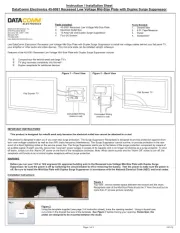
5 Augustus 2025
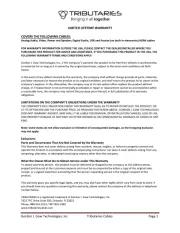
5 Augustus 2025
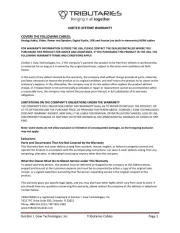
5 Augustus 2025
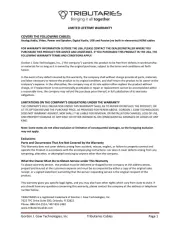
4 Augustus 2025
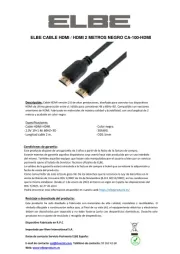
29 Juli 2025

29 Juli 2025
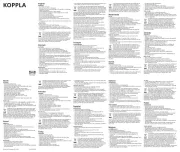
28 Juli 2025
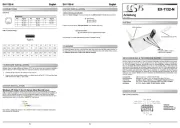
26 Juli 2025
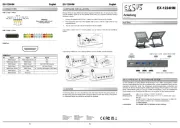
25 Juli 2025
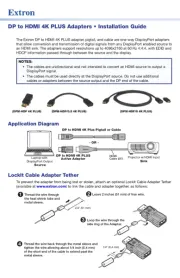
21 Juli 2025